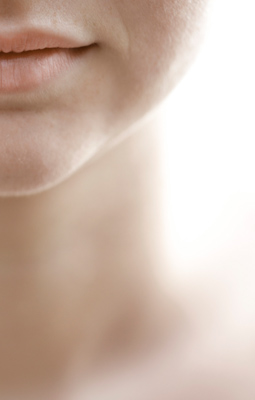is an approach which reduces pressure in the production of sound to a minimum, while consistently orientating itself towards the body’s natural physiological functioning. A new relationship between sound and body allows a rich, self-sustaining sound to develop, as well as great flexibility and assurance while music-making or speaking.
Physiology becomes sound – sound becomes physiological
We are all familiar with the idea that sound comes from our body: we use it in order to speak, sing or play an instrument. A new discovery is that the sound produced can immediately impact on the condition of our connective tissues, muscles and nervous system, and in this way influence its own formation and quality.
Motoric calm and sensory awakeness
How does this work? Not only the ear, but wide areas of our body tissue are richly endowed with receptors that respond to vibration, lengthening or pressure. These receptors are able to control the fine motoric activity of our musculature with a high level of efficiency. When we heighten our sensory skills, for example by learning to experience actively involved organs such as the tongue, finger, lips or vocal folds as receivers of the sound produced, we enable these bodily structures to organize themselves. Trust in instinct and the resonating properties of tissue (in contrast to cavities) ensues, and our sensory organs are transformed from mere “checkers“ to creators of sound.
Perception instead of control
A key role is played by the system of fascia (connective tissue) and by the larynx, the latter being not only a producer of sound, but also a double breathing valve which regulates low and high pressure states in the lungs and vocal tract. Through this function, it is physically involved in even the finest exertion of the body. When the larynx learns to be a sensory organ, it becomes able to effect a comprehensive regulation of the system’s tonus: all at once, playing, singing or speaking feels effortless as if it was happening by itself – with reduced expenditure of energy and a free, brillant sound which communicates immediately to the fascinated listener.
Question-based pedagogy on an equal footing
Lichtenberger® work has the character of a shared process in which the teacher, with their experience and highly-trained perceptual skills, makes themselves available to the student as a kind of extended instrument of sensory perception. By means of targeted questions and sensory stimulations, the student is helped by the teacher to develop their individual physical perception of the sound –not as one who knows „how it should be“, but as someone who knows where the “doors” are, and how one can open them.
The new experience of the role of the sound influences the human being as a whole, even has the potential to transform obstructive mental processes, and can ultimately have a profound effect on artistic perspective and allow fresh approaches to the interpretation of artistic works to come into being.
The Lichtenberger® Institute for Applied Physiology of the Voice was founded by singer and singing teacher Gisela Rohmert and ergonomics Professor Dr.-Ing. Walter Rohmert in 1982. Since 2010, the Institute has been under the leadership of violinist Martin Landzettel. Based on the results of an extensive series of physiological / acoustic tests carried out on musicians in collaboration with the Technical University in Darmstadt, a new approach to the pedagogy of voice and instrument is being developed and taught according to the principles of empirical, inter-disciplinary research here.
